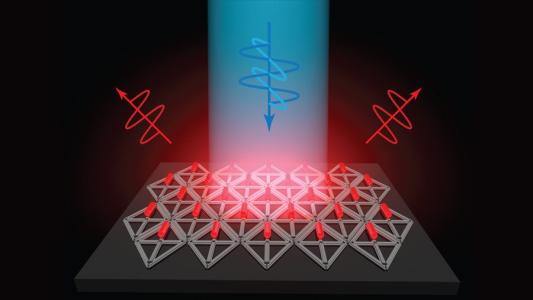In 1923, French writer Marcel Proust published the fifth book of his seven-volume epic Remembrance of Things Past. In it, he wrote a passage that has over time been paraphrased as “the real voyage of discovery consists… not in seeking new landscapes, but in having new eyes.” This is a message that astronomers have long known, and it was demonstrated yet again in a recent announcement of a new and unique photograph of the Milky Way galaxy. This image opens up an entirely different way of understanding our galactic environment.
From photons to neutrinos
Since time immemorial, astronomers have observed the sky using the electromagnetic spectrum, from the unaided eye of prehistory to the first use of a telescope in 1610. That was followed by radio waves in 1932 and gamma rays in the 1960s. But electromagnetic radiation (the particle form of which is a photon) isn’t the only thing that can cross interstellar space. Another messenger is the enigmatic neutrino, a particle emitted in some types of nuclear decay.
Researchers used the IceCube detector to look for very energetic neutrinos coming from deep space. IceCube is enormous: It is composed of a cubic kilometer of ice located at the South Pole. Neutrinos from space pass through the atmosphere and interact in the ice. Those interactions deposit a lot of energy, which is converted into a very short-lived blink of light. Using a variety of patterns of blinks, researchers are able to work out the direction the original neutrino was coming from.
This measurement was very difficult. Neutrinos are emitted from nuclear reactions, and the biggest nearby nuclear reactor is the sun. Indeed, all stars emit neutrinos, although the energy of neutrinos emitted by stars tends to be much lower than the ones that the IceCube detector was looking for. However, the rate at which low-energy neutrinos was detected was much higher than for high-energy ones. Digging out the high-energy signal required ten years of data and advanced AI techniques.
The hard work paid off, yielding a data set with about 60,000 instances of high-energy neutrinos from space. Because neutrinos are emitted by astronomical objects, researchers expected the most frequent sources of high-energy neutrinos to be in the plane of the Milky Way, and that is what they found.
Gamma-rays and high-energy neutrinos
The process by which galactic high-energy neutrinos are created is not yet completely understood. It is thought that they do not directly originate inside stars, supernovae, or other astronomical objects. Instead, astronomers think that gamma-rays are the source. Gamma-rays are a very high energy form of electromagnetic radiation, much more powerful than X-rays. They are emitted from very hot and massive stars, as well as from the extremely hot gas surrounding a black hole.
These gamma-rays fly through space and occasionally interact with hydrogen gas floating between the stars. It is believed that the interaction between gamma-rays and hydrogen nuclei produces the type of high-energy neutrinos observed by IceCube.
Researchers have tested this hypothesis and found that it appears to be roughly true. The most energetic gamma-rays and high-energy neutrinos seem to be coming from the same locations in space. However, the evidence is not definitive. While astronomers can very precisely determine the origin of gamma-rays, they have not achieved the same precision for neutrinos. When a high-energy neutrino is detected in IceCube, the neutrino’s original direction of travel can only be determined with an accuracy of about five degrees. This is enough to establish only a rough correlation between sources of gamma-ray and neutrino emission.
When researchers use the well-known pattern of gamma-ray emission in the Milky Way to predict the expected rate of high-energy neutrino production, they find that more neutrinos are detected than expected. This discrepancy has drawn the attention of astronomers, as they try to understand where the unexpected excess of high-energy neutrinos is coming from.
Fresh new eyes
Science history is full of examples where new detector capabilities have led to an improved understanding of the Universe around us. With the ability to image cosmic neutrinos now available, astronomers expect to learn more of our galaxy’s secrets. In the future, a larger version of IceCube — this one using ten cubic kilometers of Antarctic ice — will provide an even bigger window on the cosmos.
This article was reprinted with permission of Big Think, where it was originally published.






